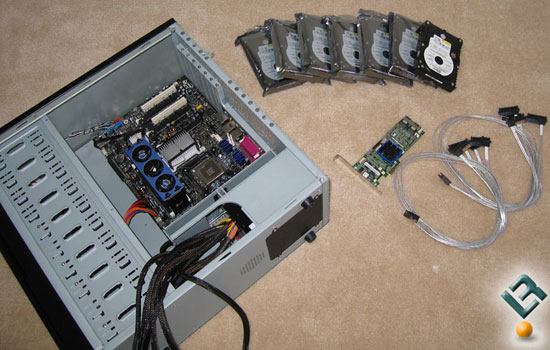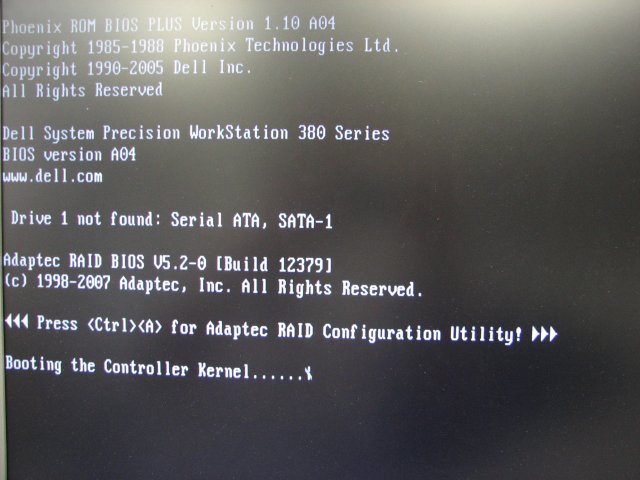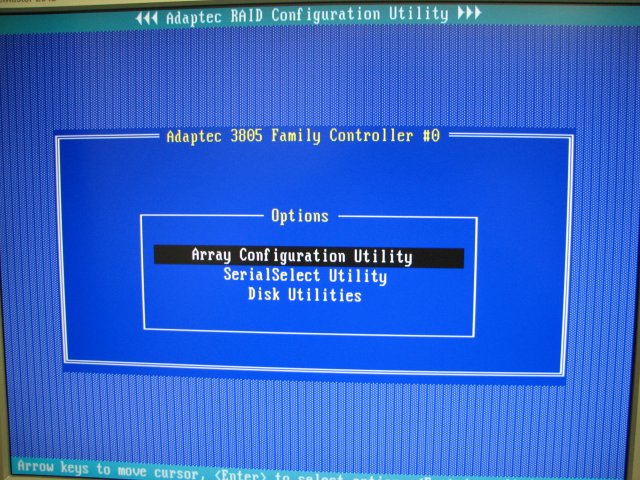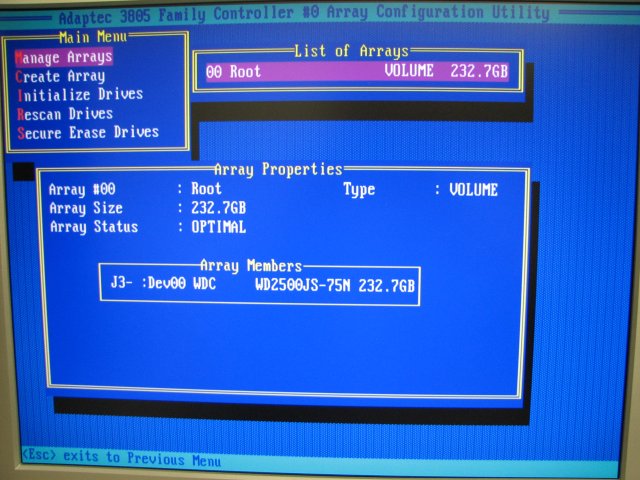Adaptec RAID 3805 8-port SATA and SAS Controller Review
System Setup

To run these tests we used Ubuntu Linux in 32b. Linux allows more accurate IO tests since background processes can be kept under control. In this review, hdparm and bonnie++ were used to test the various configurations with the ext3 filesystem. Ext3 is a decent middle of the road filesystem in the linux world. They arrays were also independent of the operating system’s drive.
| Test Platform | |||||
|---|---|---|---|---|---|
|
Component |
Brand/Model |
Live Pricing |
|||
|
Processor |
Intel QX6700 |
||||
|
Motherboard |
Intel D975XBX2
|
||||
|
Memory |
4GB Kingston HyperX PC2-9600
|
||||
|
Video Card |
XFX GeForce 8800 GTX |
||||
|
Hard Drive |
8x Western Digital Raptor 150GB |
||||
|
Cooling |
Thermaltake Big Typhoon VX |
||||
|
Power Supply |
Thermaltake 850W |
||||
|
Operating System |
Ubuntu Linux – Feisty Fawn 32-Bit (ext3) |
||||
Setting up the card in the machine is fairly straight forward. Its a PCIe card that uses 4 lanes. In the test system, we had an 8 lane slot which works fine. 4 lane slots are not very common anymore you will probably have better luck locating an mainboard with an 8 lane slot like this one. Since this is a fairly low power device at 3.3 Watts there is no additional power needed. The bus will be able to power the card on its own. The drive are spun up in a staggered fashion to allow for unneeded load on the system. This is very common for high end cards, however very often forgotten at this price point.
The card itself has two SFF-8087 connectors which can support up to four drives a piece. Whats interesting about the connectors is they actually force you to use the SATA power cable. This could vary from drive to drive, but using the existing molex definitely did not work as the drives would not spin up. This warning should be front and center, which a sticker on either the static bag or the controller itself. This would probably save adaptec or forums some frustrated posts.
Setup for the arrays is usually not performed in the operating system in either case. It’s typically configured in the BIOS at boot time. Hardware raid cards typically also have kernel that runs on the card. This allows software tools such as Adaptec’s Storage Manager to see and manage arrays from supported operating systems. For this review I performed all setup using the BIOS.

Once the controller is booted, you can then enter the BIOs by hitting Ctrl-A. Here you are presented with a nice, concise menu that directs you to the three primary functions this card offers.

Creating Raid0, Raid1 and Raid10 arrays is fairly straight forward and fast. However building Raid5 and Raid6 arrays takes 3-4 hours depending on the type and drive count. Whats neat is even while the raid5 arrays were building, they were immediately available however with reduced performance. One they completed, performance across the board bumped up to normal levels.
For these tests the chunk size was left at the card’s default of 256K. This value typically ranges from 16k up to 1024k. Smaller chunks are used with smaller data files, while larger chunk sizes are typically used with arrays containing large files. Space efficiency wise, chunk size is irrelavent. Speed in terms of random access and data streaming will change considerably based on this setting. Make sure you set up your array correctly the first time, you cannot change this later without rebuilding the array.
Under the array configuration utility, you can initialize drives, create arrays and check their status. This controller allows you to setup multiple arrays depending on the number of drives available. Adaptec as usual has done a really good job with their menu layouts. They are simple to navigate and do not overwhelm the user with extraneous information. Personally, I have used their SCSI lines of cards for desktops and small servers for many years. I was pleasantly surprised to see the very familiar navigation system still in use.

Raid setup can be a real pain, especially with software raid cards which require different driver modes for booting operating systems. This Adaptec card since its hardware driven, exports drives or arrays as actual volumes for the OS to utilize. Since this particular controller supports up to 8 drives; if you have the money you can fine tune a couple different types of volumes – one for speed, one for safety or simply export single drives without being associated with an array.

Comments are closed.